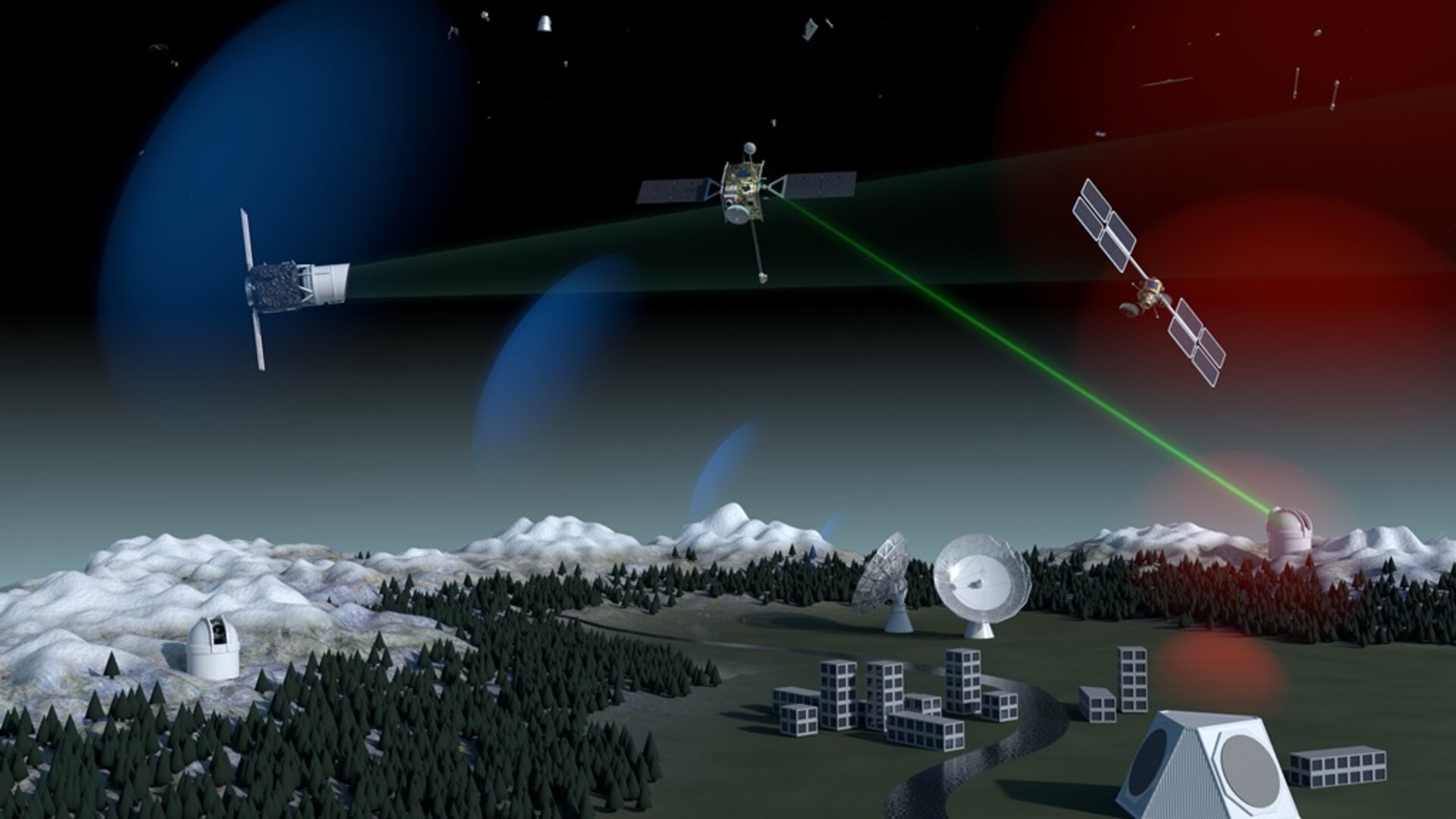
Radar, telescopes and software-based models and analytics are the pillars of space situational awareness. (ESA image)
SPACE SYMPOSIUM — The Space Force has awarded L3Harris a $145 million contract modification to continue maintaining and overhauling infrastructure used to track objects in space, the company recently announced.
Originally awarded to L3Harris in 2020, the contract for Maintenance Of Space Situational Awareness Integrated Capabilities (MOSSAIC) spans 10 years with a value of up to $1.2 billion, the company has previously said. The program supports command centers in California, Colorado and Virginia that leverage a network of sensors to help construct a clearer view of objects orbiting the Earth, data that is then disseminated to users in the public and private sectors.
“Space domain awareness is rooted in data and having the right information at the right time, which is critical to warfighting operations in all domains,” Ed Zoiss, president for space and airborne systems at L3Harris, said in the Wednesday release. “MOSSAIC advancements will improve current detection and tracking capabilities to better understand the location and behavior of objects in space.”
RELATED: SPACECOM ops head ‘tired of the excuses’ about satellite tracking gaps
Space domain awareness refers to the ability to track and characterize the activity of objects on orbit, a critical capability for spacefaring nations that want to safely use their own satellites and discern the activity of others. It also involves tracing debris that can pose a threat to existing satellites.
The MOSSAIC-associated systems are a component of the larger web of sensors aimed at various regions of space, collectively referred to as the Space Surveillance Network. Along with maintenance and upgrades to three Ground-Based Electro-Optical Deep Space Surveillance (GEODSS) telescopes, MOSSAIC is also refreshing other tools that support the mission of tracking objects in multiple orbits.
RELATED: UK asks industry for new ground-based space domain awareness sensor capability
Some of that work has already been completed. According to the press release, L3Harris last year finished work on three separate systems: GEODSS telescopes based in Maui, Hawaii, a phased array radar housed at Eglin Air Force Base, Fla. and a command-and-control center in Dahlgren, Va.
And just last month, L3Harris “completed a key communications upgrade milestone” to make comms more resilient, the release adds, which “was reported as 100 percent success rate by Space Force officials.”








